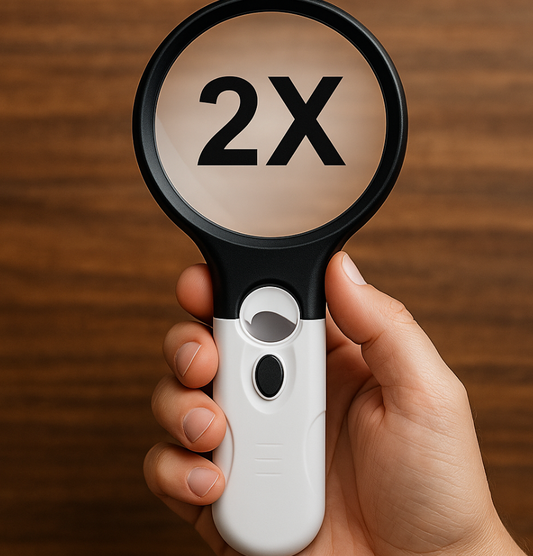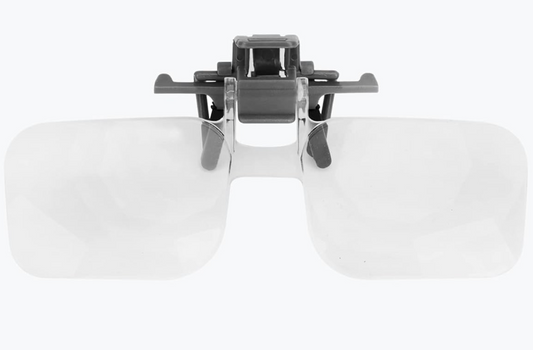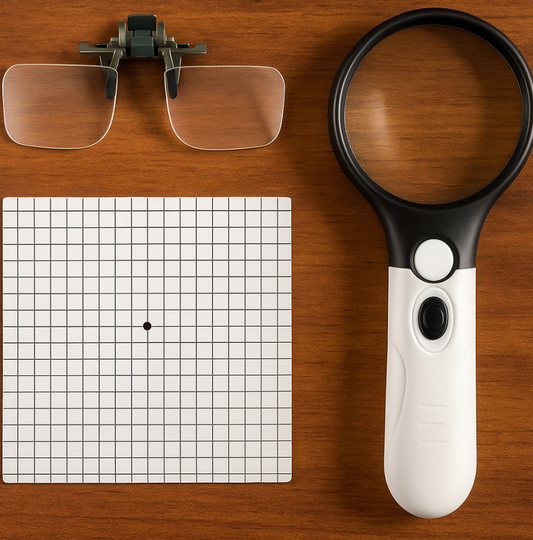Ozempic and Your Eyes: What You Need to Know About Vision Risks
Share
Ozempic® (semaglutide) has become a popular medication for managing type 2 diabetes — and more recently, for weight loss. While it can help control blood sugar and improve overall health, many people are asking: “Can Ozempic affect my eyes?”
The answer is yes — in some cases, Ozempic may have effects on your vision. Here’s what you should know.
How Ozempic Works
Ozempic is a once-a-week injectable medication that helps lower blood sugar. It works by:
- Helping your body release more insulin when you eat
- Slowing how quickly food leaves your stomach
- Reducing appetite
For people with diabetes, better blood sugar control can mean better long-term eye health. But sometimes, changes in blood sugar happen too quickly — and that can cause temporary or even long-term vision problems.

![]() Possible Effects on Your Eyes
Possible Effects on Your Eyes
Temporary Blurry Vision
When your blood sugar changes rapidly — either up or down — the lens inside your eye can swell or shrink slightly. This can cause blurry vision for days or weeks until your blood sugar levels stabilize.
Worsening of Diabetic Retinopathy
If you already have diabetic retinopathy (damage to the tiny blood vessels in the retina), rapid improvement in blood sugar from Ozempic can sometimes make the condition worse at first.
While this might sound alarming, it’s a known effect seen with many diabetes medications. Over time, good blood sugar control is protective — but it’s important to monitor your eyes closely during the first months of treatment.
Risk of Vision Loss if Retinopathy Is Severe
In rare cases, people with advanced diabetic retinopathy have experienced sudden vision changes or loss when starting Ozempic. This is why eye exams are essential before and during treatment.
Other Eye Symptoms
Some people have reported:
- Eye pain or discomfort
- Flashes of light or new floaters
- Sudden blind spots
These could be signs of a retinal problem or bleeding and should be checked immediately.
Who’s at Higher Risk?
You may be more likely to experience vision issues from Ozempic if you:
- Have long-standing diabetes
- Already have diabetic retinopathy
- Experience rapid drops in blood sugar
- Haven’t had a recent eye exam
How to Protect Your Vision While Taking Ozempic
- Get a baseline eye exam before starting treatment. (If you're diabetic without any complications - eye exams are recommended yearly)
- Schedule regular follow-ups — every 6–12 months, or sooner if you notice changes.
- Report any new symptoms like blurry vision, flashes, floaters, or dark spots right away.
- Work with your doctor to adjust your blood sugar levels gradually if you have severe eye disease.
Bottom Line
For most people, Ozempic is safe for the eyes — and controlling blood sugar is one of the best ways to protect vision long-term. But if you already have diabetic eye disease, it’s important to watch for changes and get regular eye exams.
Your eyes are worth protecting — talk to both your prescribing doctor and your optometrist to make sure your treatment plan supports your vision health.



